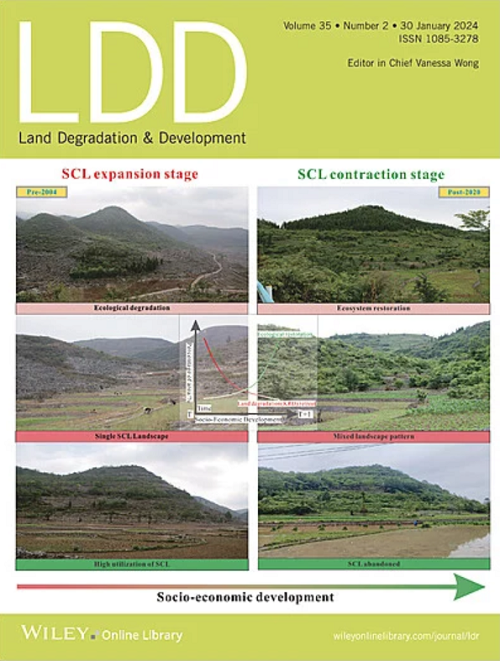Relationship Between Plant Communities and Soil Microbial Diversity and Community Structure in the Desert Steppe of Inner Mongolia
IF 3.7
2区 农林科学
Q2 ENVIRONMENTAL SCIENCES
引用次数: 0
Abstract
Soil microbial biodiversity plays a fundamental role in regulating dryland ecosystem multifunctionality, being influenced by various environmental factors, particularly plant cover and soil properties. However, the complex interactions among soil microbial communities, plant communities, and soil physicochemical properties in desert steppe ecosystems remain inadequately understood. To address this knowledge gap, we examined the relationships between aboveground plant communities and soil environmental parameters (including nitrate nitrogen, pH, cation exchange capacity, and effective phosphorus) and their influence on the diversity and community structure of soil bacteria, archaea, and fungi across 37 desert steppe sites in Bayannur, Inner Mongolia, a typical northern China's dryland region. Our results showed that bacterial diversity exhibited significant variation among plant communities, with notably higher diversity in内蒙古荒漠草原植物群落与土壤微生物多样性及群落结构的关系
土壤微生物多样性在调节旱地生态系统的多功能性中起着基础性作用,受到多种环境因素的影响,尤其是植被覆盖和土壤性质的影响。然而,荒漠草原生态系统中土壤微生物群落、植物群落和土壤理化性质之间的复杂相互作用仍未得到充分认识。为了解决这一知识空白,我们研究了内蒙古巴彦淖尔37个荒漠草原样地地上植物群落与土壤环境参数(包括硝酸盐氮、pH、阳离子交换容量和有效磷)的关系及其对土壤细菌、古细菌和真菌多样性和群落结构的影响。结果表明,不同植物群落间细菌多样性存在显著差异,短花针茅(Stipa breviflora)为主的土壤细菌多样性明显高于短花针茅(Peganum harmala)为主的土壤。微生物群落的优势门为细菌中的酸杆菌门(21.5%)、古细菌中的绿古菌门(97.3%)和真菌中的子囊菌门(82.1%)。细菌多样性与土壤pH、速效钾和碳酸盐含量呈显著相关,古细菌多样性与铵态氮、速效磷、碳酸盐含量和阳离子交换量呈显著相关。真菌多样性仅与速效磷呈显著相关。环境因子对群落结构的变化有不同程度的解释,其中古细菌的解释力最高(66.1%),其次是细菌(49.0%)和真菌(32.8%)。结构方程模型(SEM)表明,植物群落主要通过改变土壤pH和离子含量来影响细菌群落。这些发现强调了植物群落和土壤性质在塑造土壤微生物多样性模式中的关键作用。鉴于生物多样性在生态系统过程中的重要功能,我们的研究结果表明,土壤细菌多样性对植被变化敏感,与土壤养分动态密切相关,可作为监测和评估荒漠草原生态系统退化的有价值的生物指标。
本文章由计算机程序翻译,如有差异,请以英文原文为准。
求助全文
约1分钟内获得全文
求助全文
来源期刊

Land Degradation & Development
农林科学-环境科学
CiteScore
7.70
自引率
8.50%
发文量
379
审稿时长
5.5 months
期刊介绍:
Land Degradation & Development is an international journal which seeks to promote rational study of the recognition, monitoring, control and rehabilitation of degradation in terrestrial environments. The journal focuses on:
- what land degradation is;
- what causes land degradation;
- the impacts of land degradation
- the scale of land degradation;
- the history, current status or future trends of land degradation;
- avoidance, mitigation and control of land degradation;
- remedial actions to rehabilitate or restore degraded land;
- sustainable land management.
 求助内容:
求助内容: 应助结果提醒方式:
应助结果提醒方式:


